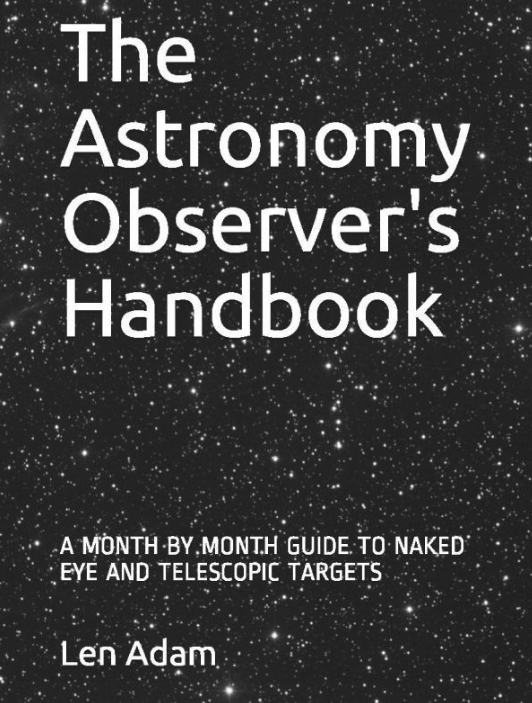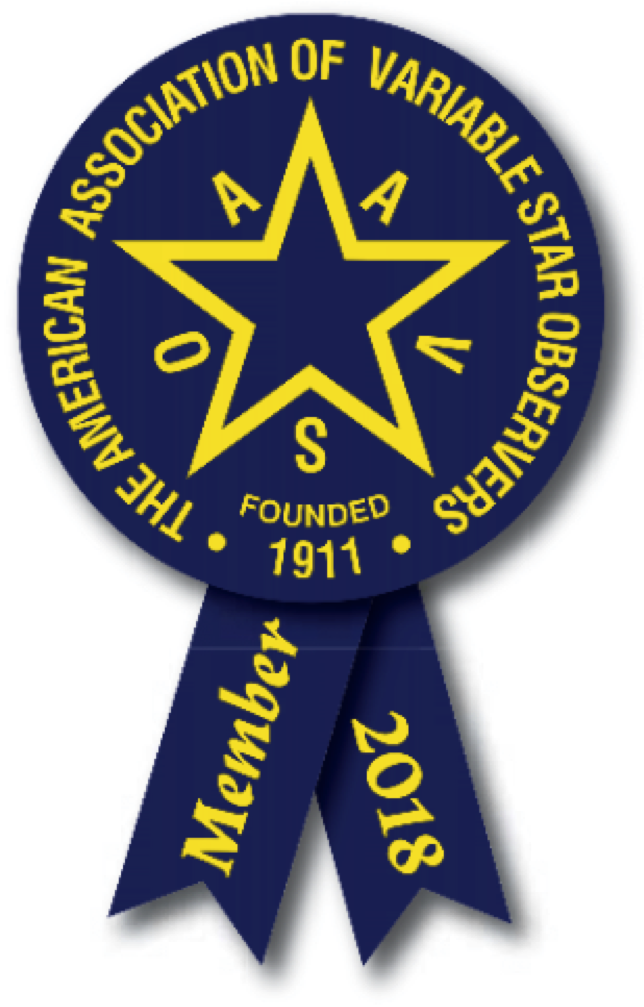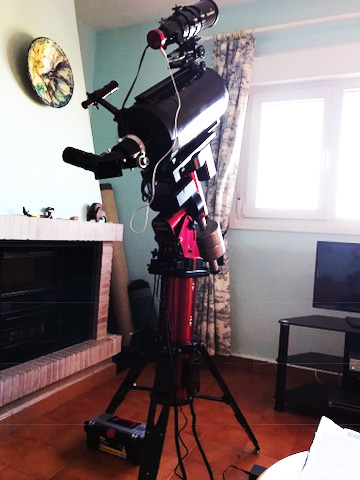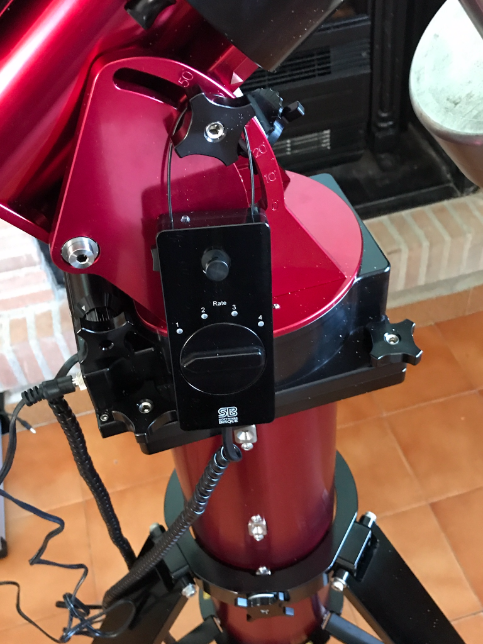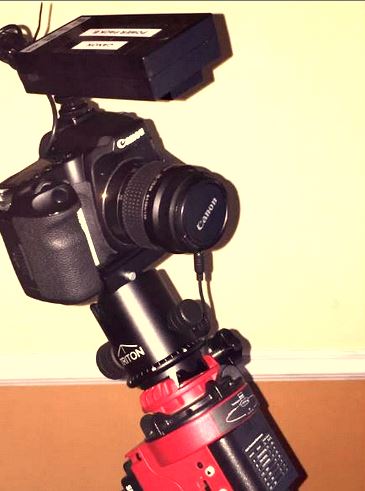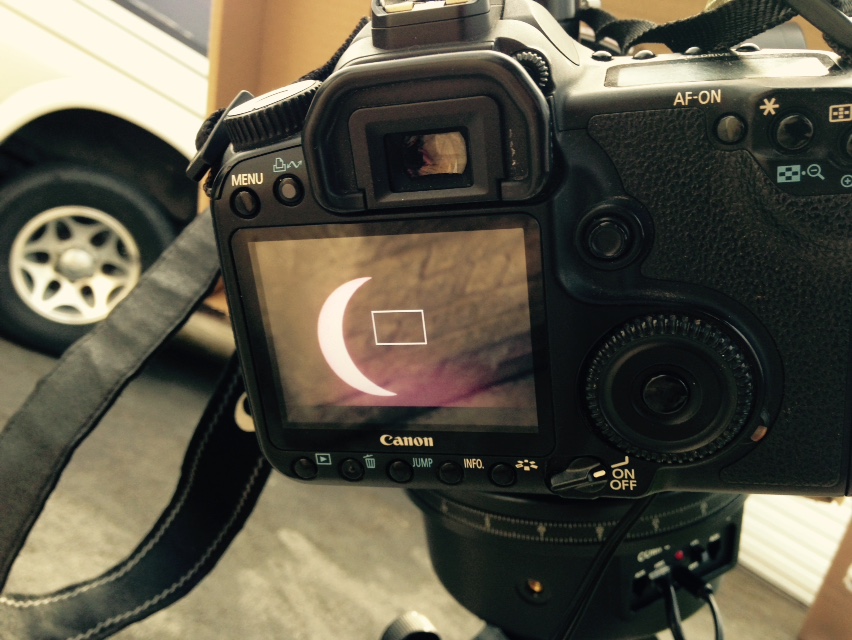Iris approaches The Stargate image - and I image 2 galaxies in Ursa Major. The Moon is at 63%
 Saturday, April 13, 2019 at 2:18PM
Saturday, April 13, 2019 at 2:18PM At 0015 this morning (13th April 2019) I imaged the near opposition Minor planet 7 Iris as it approched the asterism known as "The Stargate". The LRGB images consists of 5 X 20 second Luminance images and 3 x 20 second images for each of the Red , Green and Blue filters. The negative image gives the details. "The Stargate" in also known as Struve 1659. Earlier I had imaged M81 and M82 in Ursa Major .


Messier 81

Messier 82

The 63% Moon

Animation of Pallas near Eta Bootes
 Thursday, April 11, 2019 at 10:12AM
Thursday, April 11, 2019 at 10:12AM Movement of Pallas over a 56 minute period this morning 11th April 2019

Caldwell 27 - The Crescent Nebula
 Tuesday, April 9, 2019 at 11:47AM
Tuesday, April 9, 2019 at 11:47AM After imaging the Minor Planet Pallas this morning I pointed the telescope at Caldwell 27, the Crescent Nebula. It started to get windy so I limited the imaging to 4 minutes Luminance, 2 Minutes each Red, Green, Blue and H Alpha.
Partial cloud cover when imaging the Ring Nebula Messier 57
 Friday, April 5, 2019 at 2:18PM
Friday, April 5, 2019 at 2:18PM Before 5 a.m. this morning it was partially clear so I looked for a gap in the clouds and I decided to image M57
This is where M57 was placed when slewed to it from start up - almost spot on in the centre of the field of view.
Cloudy 4th April 2019 - Setting up ASI 120MC Camera
 Thursday, April 4, 2019 at 7:51AM
Thursday, April 4, 2019 at 7:51AM I am trying to use my ZWO ASI 120MC Camera as the guidescope camera to use with the Paramount MyT. In reality the tracking on the mount is quite accurate without guiding but clearly longer exposures will be possible if I can achieve good guiding with this camera. I could not get the camera to produce images with its connection via the Icron ethernet hub but checking on the Software Bisque support site I found this:
"Have you added any kind of extender in the mix? I just learned that these ZWO guide cameras won’t pass through Icron Rangers. Not sure about Startech hubs. "
That is exactly what I was doing. I already have to use a powered USB hub to control the MyT as it will not operate from the USB output of the remote Icron hub which is located on the Primaluce bar. I reconnected the guiding camera to one of the two USB ports on the end of the Versa-Plate. The feed for this is through the MyT mount from the USB input that connects from the MacBook to the mount. Once this was done I was able to take images using the guide camera although it has not yet been focused or aligned with the main scope.
As my main camera on the 8-inch Ritchey-Chretien scope is also a ZWO (1600) I thought there would be a problem with the software distinguishing between the two of them.
In fact under the camera or autoguider settings, once a ZWO Camera has been selected there is a drop down menu to select the appropriate camera.

A BUSY DAY WITH EARLY MORNING AND LATE NIGHT IMAGING
 Wednesday, April 3, 2019 at 7:45AM
Wednesday, April 3, 2019 at 7:45AM EARLY MORNING 3RD APRIL
At 6 a.m.today the sky was very clear and I took a monochrome image of Messier 27 using my ASI 1600 camera and 8 inch RC telescope.

I also took a short exposure of Mizar and Alcor which shows Mizar as a double star itself.

LAST WEEK'S VISUAL OBSERVATION OF MIZAR WITH DOBSONIAN
Last week I viewed Mizar and Alcor through a 150mm Dobsonian in Lancashire. The components of Mizar were further separated than in the image above uing a 25mm eyepiece. An excellent view.
NIGHT OF WEDNESDAY 3RD APRIL/THURSDAY 4TH APRIL
The night of the 3rd/4th April was crystal clear and I used it to reset the telescope pointing, taking 120 plate solved distributed images across the sky so that a list could be generated of where the telescope thought it was pointing for each image and where the telescope was actually pointing as evidenced by the plate soved image. The SkyX T-Point software then uses the errors between positions to set up a pointing model. Once this model is applied it compensates for these errors.
This image shows the points selected for imaging and the track of the telescope during the 120 point run. Notice how I have selected higher altitudes to avoid the sides of the observatory (ie the shed) and that I have avoided the polar area.

A list of the first 30 image points and errors is shown below.

T-Point advised that I needed to adjust the position of the mount but once the corrections were active the mount slewed to every object precisely and centred it in the crosshairs.
I slewed the telescope to M51 and took a series of images without any guiding. L, R, G, B - 5 images each - each of 60 second exposure time. I aligned and stcked these into an LRGB image in Nebulosity and processed the result in Photoshop. Here is the final image.

I slewed to M101 and repeated the process with the result below.

Scorpius and Jupiter
 Tuesday, April 2, 2019 at 4:29AM
Tuesday, April 2, 2019 at 4:29AM The distinctive tail of Scorpius and the planet Jupiter dominate the southern sky at 05:20 local time (03:32 Universal Time). It is fairly clear to the south there is murky cloud elsewhere but at higher altitudes parts of Lyra, Hercules, Corona Borealis and Bootes are visible. The daytime yesterday was fairly sunny in the morning but there were thunderstorms and occasional downpours during the rest of the day.
Today I attached the ETX / canon 40D assembly to the mount and balanced the new setup.
First of all I assembled the adaptors and focal reducer, connecting the ETX to the Canon 40D


I roughly focused the setup on a distant mountain.
I now had to remove the second guidescope mount and its temporary spacers made of large washers (to allow clearance to be able to adjust the guidescope mount azimuth adjustment knob) and bolted the FLO Adaptor to the guidescope mount. I needed to slide the Primaluce bar down to allow access to the underneath of the bar to be able to insert two 1/4 inch UNC bolts to attach the FLO adaptor/ guidescope mount to the bar. I removed the 8 - inch RC OTA to make this easier.
The image immediately below shows the guidescope mount with the spacing washers.

This image shows the second guidescope mount with the FLO adaptor in place - matching the first guidescope mount carrying the guidescope.





